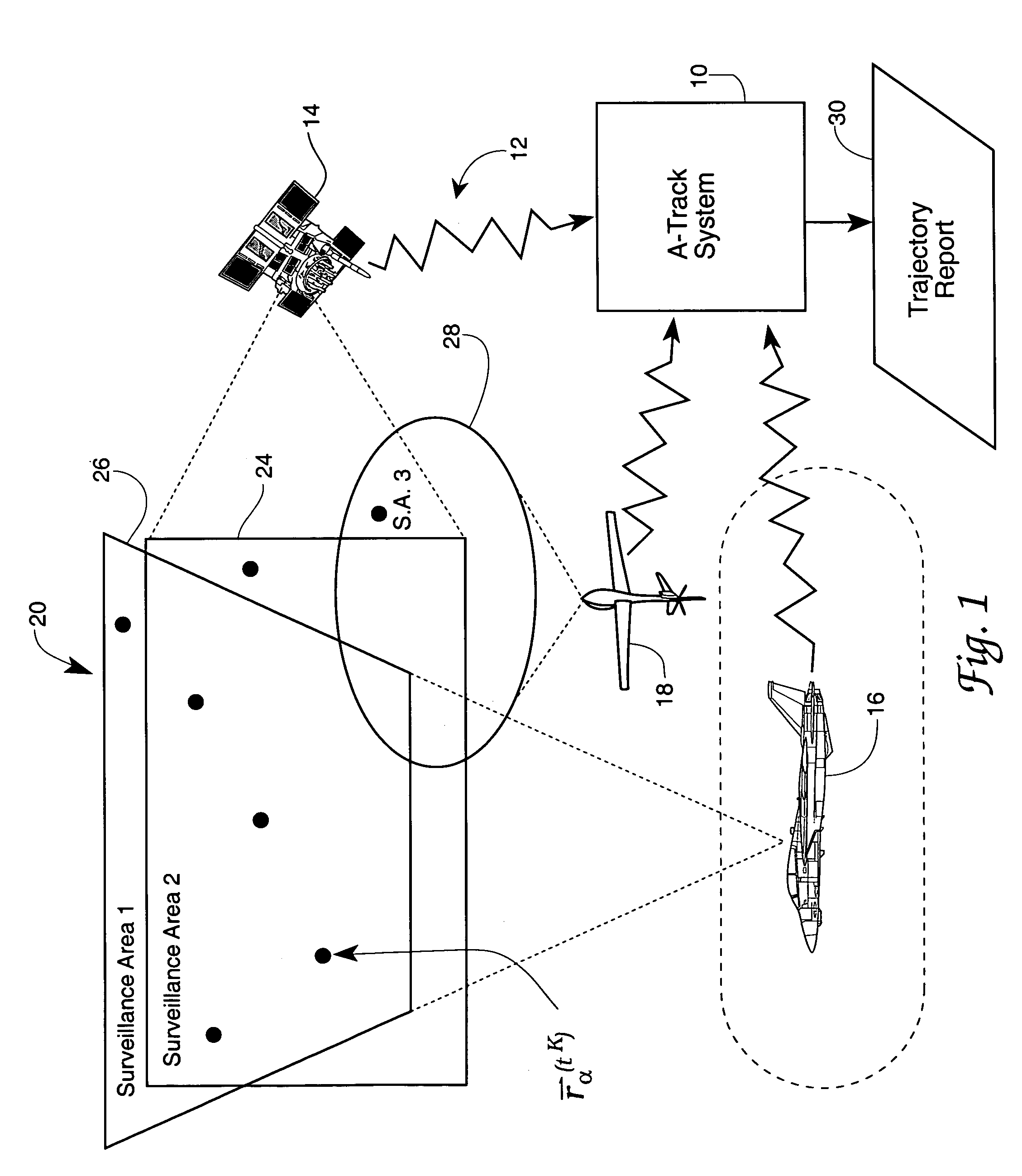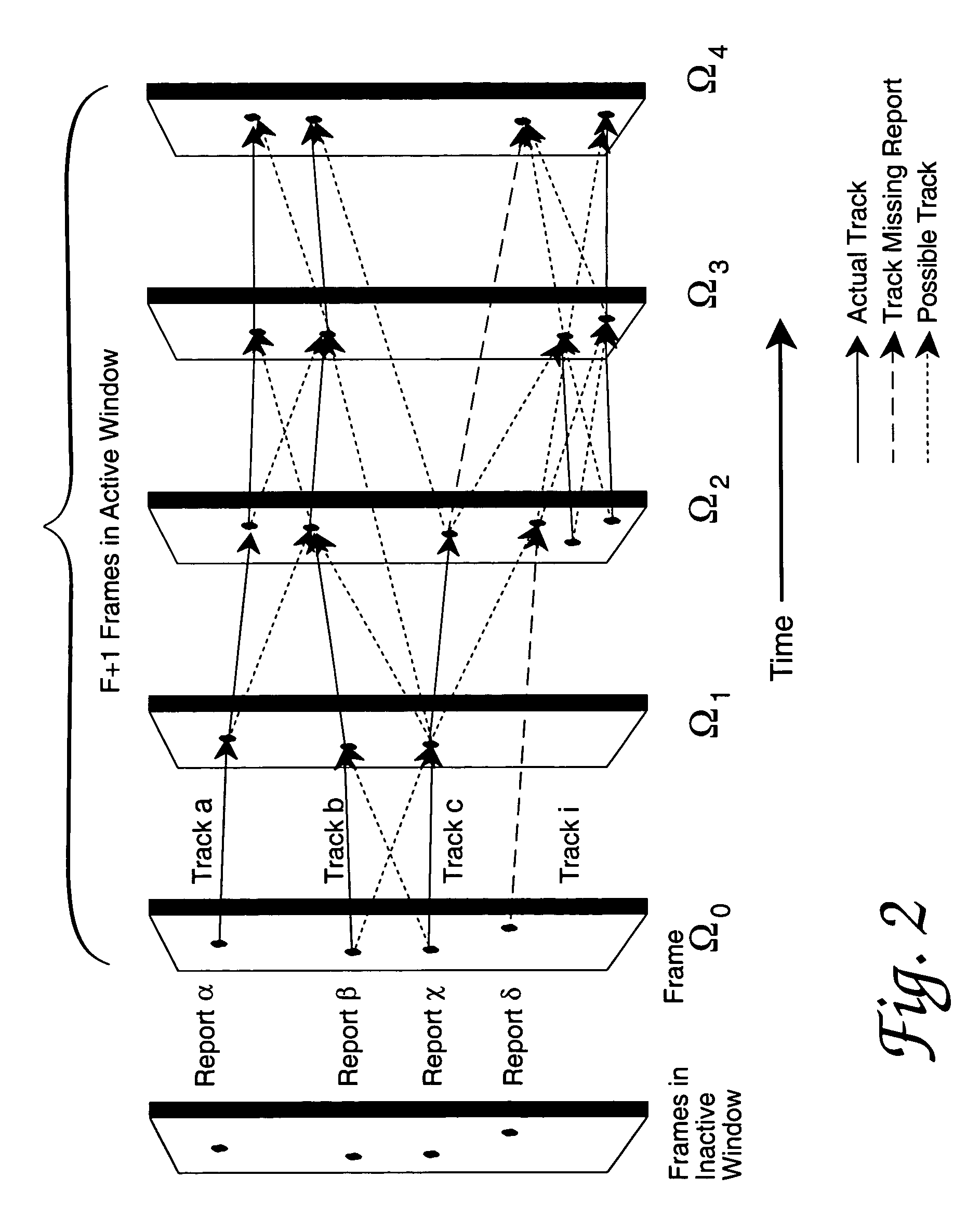ATR trajectory tracking system (A-Track)
- Summary
- Abstract
- Description
- Claims
- Application Information
AI Technical Summary
Benefits of technology
Problems solved by technology
Method used
Image
Examples
Embodiment Construction
[0020]1. Introduction
[0021]A-Track is a tracking process that is driven by automatic target recognition techniques (ATR) and structured as an optimization problem amenable to the classical relaxation labeling algorithm. The novel combination of techniques in A-Track provides a new approach to the temporal problem of establishing and extending target tracks through a sliding time window involving a sequence of multiple data frames. A data frame is a collection of sensor reports taken from one scan of a predetermined surveillance area that is being systematically and repeatedly scanned over time. The relative time differences between reports within a frame are generally much smaller than the time difference between different frames. Tracking based on high range resolution radar (HRR) sensor reports from ground targets is the application used to describe the A-Track approach; however, the approach is applicable and extendable for tracking problems based on other sensors.
[0022]The ‘A’ i...
PUM
 Login to View More
Login to View More Abstract
Description
Claims
Application Information
 Login to View More
Login to View More - R&D
- Intellectual Property
- Life Sciences
- Materials
- Tech Scout
- Unparalleled Data Quality
- Higher Quality Content
- 60% Fewer Hallucinations
Browse by: Latest US Patents, China's latest patents, Technical Efficacy Thesaurus, Application Domain, Technology Topic, Popular Technical Reports.
© 2025 PatSnap. All rights reserved.Legal|Privacy policy|Modern Slavery Act Transparency Statement|Sitemap|About US| Contact US: help@patsnap.com



